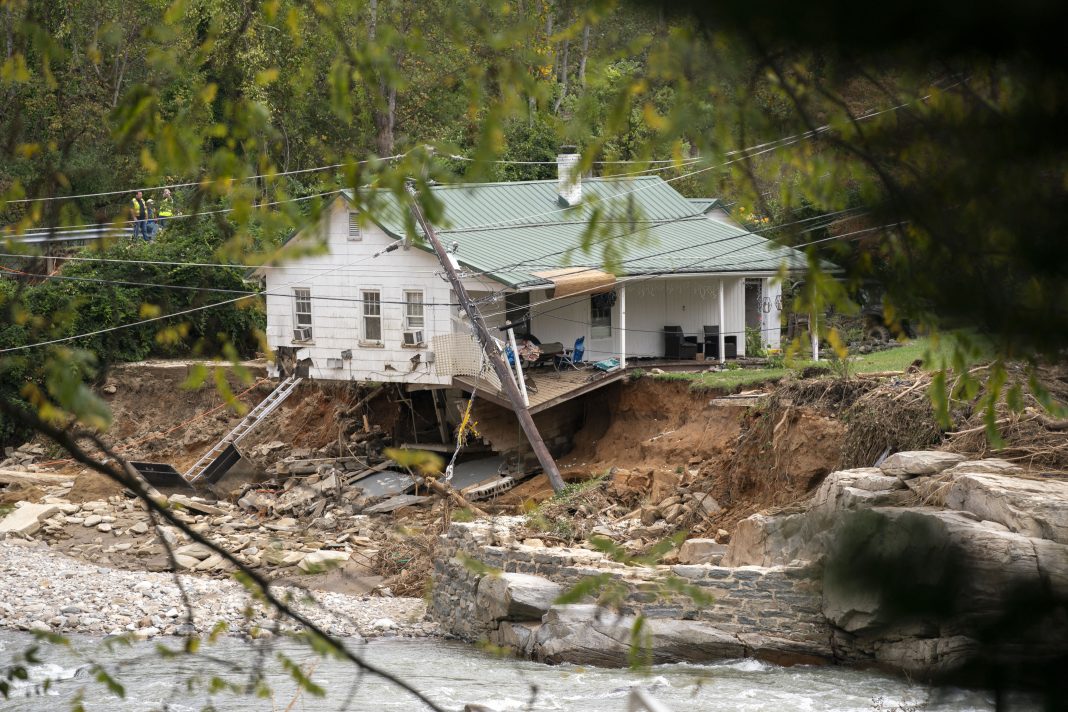In the wake of Hurricane Helene, which wreaked havoc particularly in North Carolina, insured losses have soared to an estimated $6 billion, but the real toll is likely much higher due to a staggering lack of flood insurance among homeowners in the affected regions. This discrepancy is critical, as it highlights a broader issue: a significant portion of homes are unprepared for the increasingly severe weather patterns influenced by climate change.
Historically, flood insurance has been largely contingent upon Federal Emergency Management Agency (FEMA) designations of flood zones. In North Carolina, only about 4% of homes fall within these designated zones, leading many homeowners to mistakenly believe they are out of harm’s way. However, a startling analysis from the climate risk firm First Street reveals that nearly 12% of homes in the state are, in fact, at risk of flooding—a stark contrast that underscores a dangerous disconnect between perception and reality.
The recent advancements in risk-assessment technology aim to bridge this gap. First Street has introduced a suite of climate risk data that is now accessible for every property listed for sale on platforms like Zillow. This innovation is particularly timely, as climate risks are increasingly becoming a pivotal factor for homebuyers. As Skylar Olsen, chief economist at Zillow, articulates, “Climate risks are now a critical factor in home buying decisions.” The integration of property-specific climate data empowers both buyers and sellers, equipping them with vital insights for making informed decisions regarding insurance and long-term affordability.
Each property listing now displays risk scores for various climate-related threats, including flooding, fires, wind, air quality, and heat. More intriguingly, these listings also indicate how these risks are projected to evolve over 15 and 30 years—standard durations for fixed-rate mortgages. The trend is clear: homes that exhibit flood risk today are likely to see that risk escalate over time, primarily due to the intensifying effects of climate change on rainfall patterns. In fact, even minor storms are increasingly capable of producing severe flooding, challenging the notion of safety that many homeowners cling to.
Ed Kearns, chief science officer at First Street, emphasizes a crucial point: “A lot of people think that they are safe from flood if they’re not in a FEMA flood zone, and that’s decidedly not true.” This assertion serves as a wake-up call for homeowners who assume their properties are immune to flooding risks. With the new flood maps that First Street has developed, consumers can now make better-informed choices regarding the necessity of flood insurance.
The implications of these insights are far-reaching. A recent survey by Zillow indicates that over 80% of prospective homebuyers now consider climate risk a significant factor in their purchasing decisions, with flood risk ranking as their primary concern. A Zillow analysis from August found that the number of homes listed for sale with major climate risks has surged compared to five years ago. Specifically, 16.7% of new listings are at major wildfire risk, while 12.8% are at major flood risk—figures that reflect a national trend towards increasing vulnerability.
As the public becomes more aware of these climate risks, the impact on home values is expected to be profound. The cost of insurance is an integral part of home prices, and as the necessity for insurance escalates, property values in the most affected areas are likely to decline. Kearns notes, “I think that’s going to be the most direct impact of having scores on homes that quantify risk is that there may be some direct impact on real estate values.” This is a critical consideration for potential buyers and investors, who must now navigate an evolving landscape where climate resilience is increasingly paramount.
In conclusion, the introduction of advanced risk-assessment technology and the growing awareness of climate-related threats are reshaping the real estate market. Homebuyers are now better equipped to make informed choices, but this also means that the dynamics of home values will shift in response to the realities of climate risk. As we move forward, staying informed about these risks will be essential not just for current homeowners, but for anyone looking to invest in real estate in an era marked by climate uncertainty.


